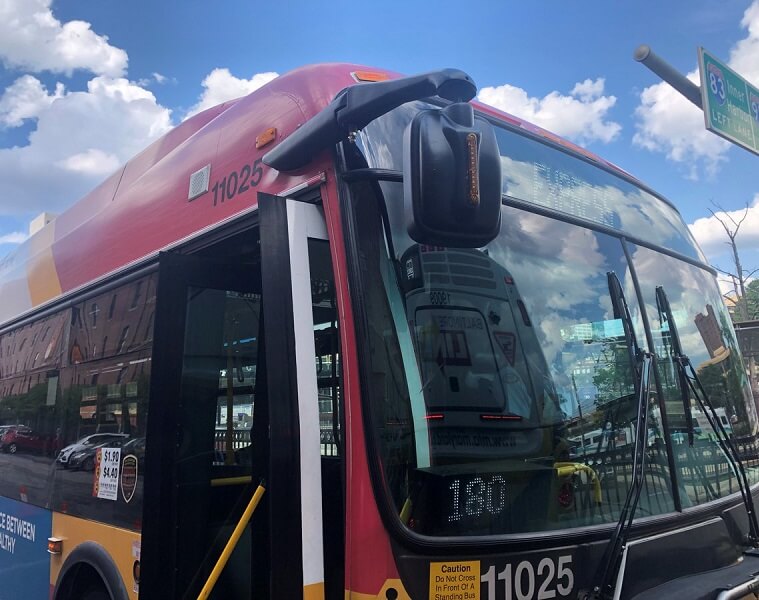Major Bus and Rail Service Cuts in Baltimore Region Planned to Meet Shortfalls

Faced with a multi-billion dollar hole created by a historic decline in ridership and revenues, the Maryland Transit Administration on Tuesday unveiled a proposal to dramatically cut bus and rail service in the Baltimore region next year.
Dozens of bus lines would be eliminated if the proposals are adopted, and numerous surviving lines would run less frequently.
Top local officials slammed the proposals, as did state lawmakers and transit advocates.
“This is a disappointing blow to the entire Baltimore metropolitan region and the many students, essential workers, and families who rely on public transportation each day,” the officials wrote in a joint statement.
“It means the essential workers, from cleaning staff to doctors and nurses, may not be able to reliably get to hospitals and medical facilities for their vital work during a public health emergency. It means more strain on our transit workers, who have been on the front-lines contending with COVID-19 in order to keep our region moving through these uncertain times,” they added.
The statement was signed by Baltimore County Executive John A. Olszewski Jr. (D), Baltimore Mayor Bernard C. “Jack” Young (D), Baltimore City Council President Brandon M. Scott (D), Howard County Executive Calvin Ball III (D), and Anne Arundel County Executive Steuart Pittman Jr. (D).
Under the state’s proposal:
- 25 local bus routes would be eliminated and 13 others would operate at reduced levels
- Two commuter bus routes would be eliminated and 20 would operate less frequently
- Six MARC trains — three on the Penn Line and three on the Camden line — would be discontinued, while Penn Line service from Baltimore to Perryville, in Cecil County, would be curtailed almost completely
The service reductions were announced on the same day that the Maryland Department of Transportation, MTA’s parent, released its proposed 6-year Consolidated Transportation Program, the rolling list of all projects the state has in its pipeline. Hearings on the CTP will take place this fall around the state.
MDOT officials said they had to absorb nearly $3 billion in revenue lost to a steep drop in transit ridership and the shift to telework.
They said all of MDOT’s “business units” — which include the State Highway Administration, Maryland Aviation Administration, the MVA, the Port Administration and others — took a hit.
“The financial impact created by the COVID-19 crisis has created an unparalleled challenge for transit agencies across the U.S. and many are facing difficult decisions,” said MDOT MTA Administrator Kevin Quinn in a statement.
“MDOT MTA will continue to strive for a safe, reliable and equitable transit system that provides opportunity to all citizens in the Baltimore region.”
Officials said they worked with large employers — particularly health care providers — to make sure that any reductions would have minimal impact on people who use transit to get to work.
In addition to the proposed cutbacks, MTA also announced proposed increases in buses that serve Grace Medical Center (formerly Bon Secours Hospital), Johns Hopkins Hospital, MedStar Harbor Hospital and the University of Maryland Baltimore Washington Medical Center.
Despite the additions, transit advocates reacted harshly, saying the reductions would harm both employers and workers.
“When you’re talking about eliminating 25 bus routes, that’s 36% of the local bus routes eliminated,” said Brian O’Malley, president of the Central Maryland Transportation Alliance. “Of the remaining local bus routes, 40% have reduced service.”
“So this is a massive change to a huge part of our regional transportation system in Central Maryland.”
O’Malley said that many large employers in the region, including FedEx, Amazon and TradePoint Atlantic, are difficult to reach for employees who don’t have a car.
“MTA said they’re trying to be strategic about where they cut, but how strategic can you be when you’re talking about cuts this massive?”
He said the reductions in service underscore the need for Congress to pass additional aid for the nation’s transit systems.
Donald C. Fry, CEO of the Greater Baltimore Committee, said it was unfortunate that MTA unveiled its proposal on the same day that Gov. Lawrence J. Hogan Jr. (R) announced that the state will shift to Phase 3 of its reopening plan on Friday, a major milestone for people who have been unemployed or under-employed due to the pandemic.
“It makes it more challenging to get to employment opportunities,” he said.
Fry also expressed concern that service cutbacks would impact neighborhoods where access to health care, schools and jobs is already limited.
“We need to look at it to see whether any access is being removed for individuals in poor and minority communities who already are facing a disproportionate economic impact from the pandemic,” Fry said.
If approved, the local bus changes would go into effect Jan. 3, 2021. Riders can visit www.mta.maryland.gov/winter2021 for a complete list of proposed changes and public hearing dates and locations.
MDOT MTA will hold 10 virtual public hearings on local bus changes between Oct. 5 and Oct. 16 as part of a 30-day public review and comment period that ends Nov. 15.
MARC and Commuter Bus public hearings and effective dates will be announced this fall.




 Creative Commons Attribution
Creative Commons Attribution